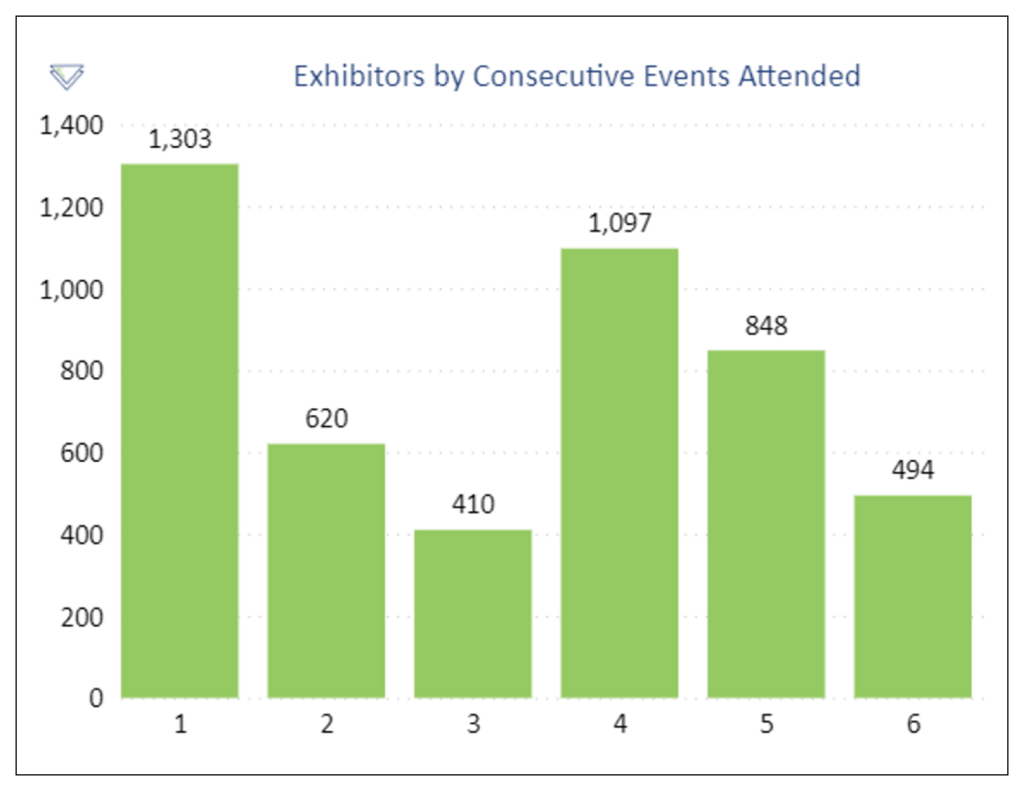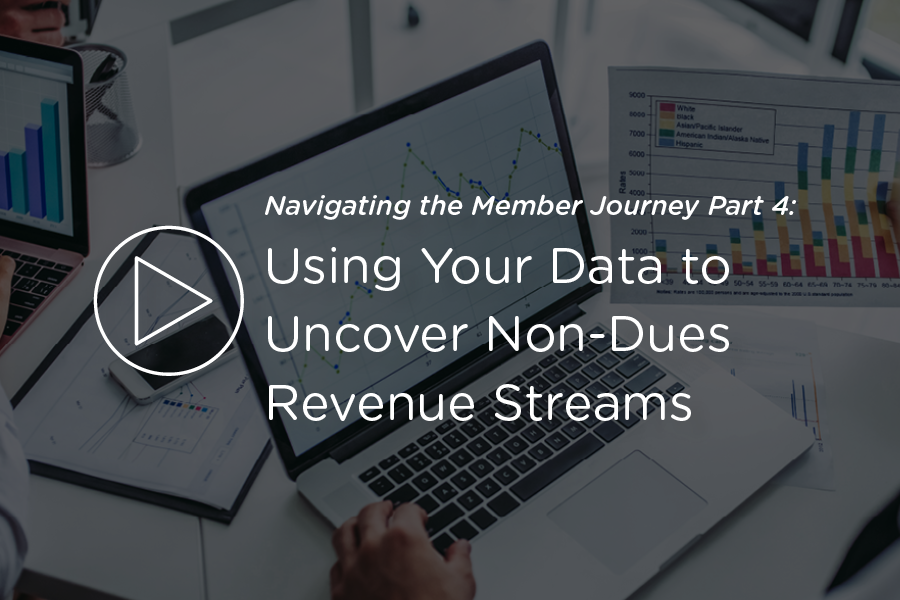As an association professional, chances are that your year revolves around your annual conference. It’s likely your association’s #1 revenue driver and member benefit.
With events being such an important part of the member experience, it is key for your association to focus on enhancing the event experience, so you can drive more revenue as a result.
In this post, we’ll explore strategies you can use to increase and optimize your event ROI. You’ll also come away with pro tips that you can use to inform your own event strategy.
How to Increase and Optimize Event Revenue
When you’re looking to increase revenue from your association’s events, an ideal approach involves audience expansion, product innovation, and alignment with market needs. Let’s dive into these important strategies, explore these methods, and outline metrics for success.
New audiences
Expanding beyond existing members to engage with new audiences is key to growth. Consider reaching out to engaged non-members, underserved populations, and other constituent groups within your industry. To attract new audiences, tactics like social media campaigns, retargeting, advertising in industry publications, and offering promotions can help.
💡 Metrics for success:
New products and services
Innovating and diversifying your offerings can attract both new and existing attendees. Consider introducing new courses, workshops, or add-ons to enhance the event experience. Explore opportunities for sponsorships throughout the event, from networking breaks to formal dinners. On-demand content can also extend the event’s reach beyond its duration.
💡 Metrics for success:
Optimizing pricing strategy
Finding the right balance between price and value is crucial. To determine how demand responds to changes in pricing, you can analyze price elasticity and test different pricing structures and promotions to find the strategy that works best for your members.
Surveying attendees can be a great way to gauge their willingness to pay. You’ll also want to evaluate cost management, resource allocation, and vendor agreements to optimize financial performance.
Alignment with audience preferences
Ensure that your offerings align with the preferences and interests of your diverse audience by segmenting attendees based on their engagement level, role, career stage, and interests. You can then tailor your communication and marketing efforts to each segment to maximize engagement and satisfaction. Overlap analysis can help you identify cross-selling opportunities and ensure all attendees receive the most relevant messages for them.
Segment Based on Behavior for More Personalized Outreach
Understanding your members goes beyond collecting demographics and job titles. It’s about tapping into behavioral segmentation – analyzing actions to guide decisions. This approach offers a wealth of insights, revolving around what members voluntarily engage in rather than relying solely on prompted responses.
Behavioral segmentation opens doors to a more personalized and effective member experience. Consider events, for example: How often do we present offerings that may not resonate with attendees’ current career stages or industry segments? By leveraging behavioral insights, associations can align conferences with attendees’ preferences, giving them a more tailored and valuable experience.
We know fostering a balance between returning and new attendees is crucial for industry growth but tracking these metrics isn’t always a priority. Adopting a goal of 80% returning and 20% new attendees can serve as a starting point, allowing associations to gauge their progress and adjust strategies accordingly.
By understanding members’ behaviors and preferences, your association can recommend relevant content, meetings, or tracks, enhancing engagement and satisfaction.
Keep in mind that behavioral segmentation doesn’t necessarily require explicit member input. You can infer member characteristics based on observed behaviors, allowing for more nuanced and targeted segmentation strategies.
Rethink Conference Attendance
When it comes to understanding conference attendees, many associations rely on past attendance data as a key segmentation factor. We’d challenge you to consider a different perspective. Instead of focusing solely on whether attendees were present, shift your attention to who attended.
By analyzing attendee demographics, you can gain valuable insights into the types of folks who engage with your events. Are there common credentials or job titles among attendees? Understanding these patterns allows you to tailor future conferences to better suit your audience’s preferences.
Taking this even further, examining the event pipeline can provide valuable insights into attendee progression. Do your events naturally lead attendees into different levels or types of conferences? By mapping out this progression, you can ensure a seamless and engaging experience for attendees as they advance in their careers.
Content expectations also play a crucial role in shaping attendee experiences. By aligning conference content with attendee demographics and preferences, you can create a more personalized and impactful event.
Surveying attendees is another valuable tool for gathering insights and feedback. Short-form surveys can provide quick and actionable feedback, helping us understand attendee preferences and expectations. However, it’s essential to use caution and avoid over surveying attendees, as this can lead to survey fatigue.
Remember: when interpreting survey results, it’s crucial to be transparent and responsive. Communicate survey findings and how they will inform future conference planning decisions. By demonstrating a commitment to listening to attendee feedback and implementing changes based on their input, you can build trust and engagement within our community.
Behavioral segmentation offers a powerful framework for understanding conference attendees and shaping future conference experiences. By analyzing attendee demographics, mapping event pipelines, and aligning content with attendee expectations, you can create more personalized and impactful conferences that resonate with your audience.
Maximize Exhibitor and Sponsor ROI
Exhibitors and sponsors play a vital role in the success of association events, often driving a significant portion of revenue. Understanding their behaviors and preferences can be just as crucial as understanding those of attendees.
A behavioral analysis approach to exhibitor and sponsor management can offer a nuanced understanding of their needs and preferences. By segmenting exhibitors based on their attendance patterns and aligning their profiles with attendee demographics, you can foster stronger partnerships and maximize event success.
Another way to help ensure that exhibitors and sponsors receive the personalized attention they deserve is shifting your focus from past attendance to consider future potential.
Is your data helping you optimize your event revenue?
Embracing behavioral segmentation in your member data is essential if you’re looking to enhance member experiences and drive growth. By leveraging behavioral insights, you can create more personalized and impactful offerings, ultimately strengthening member engagement and satisfaction.
So now that we’ve covered the ways your events can impact your revenue, what’s next?
Many associations are facing declining membership dues. In order to grow, associations need to diversify revenue streams. In this on-demand webinar, Using Your Data to Uncover Non-Dues Revenue Streams, special guest and non-dues revenue expert Teri Carden joined us to discuss how associations can find new non-dues revenue opportunities.





